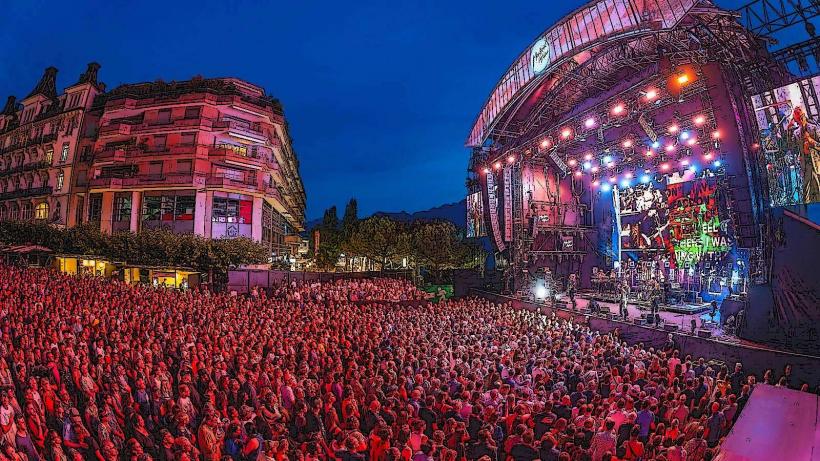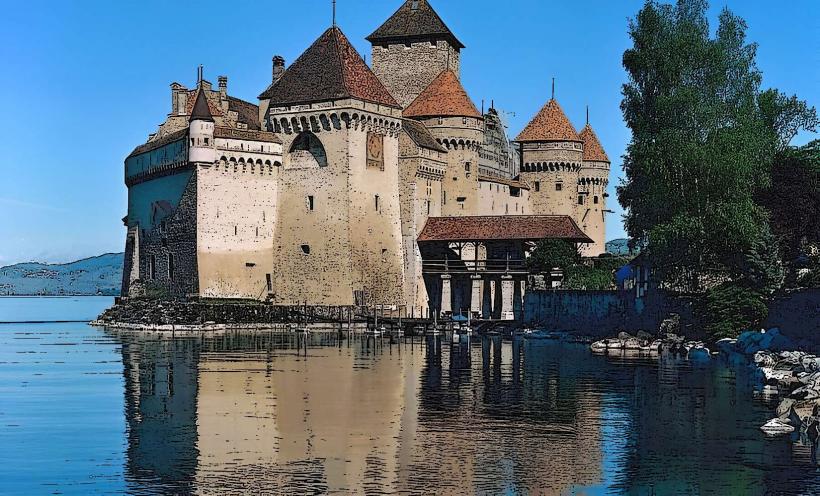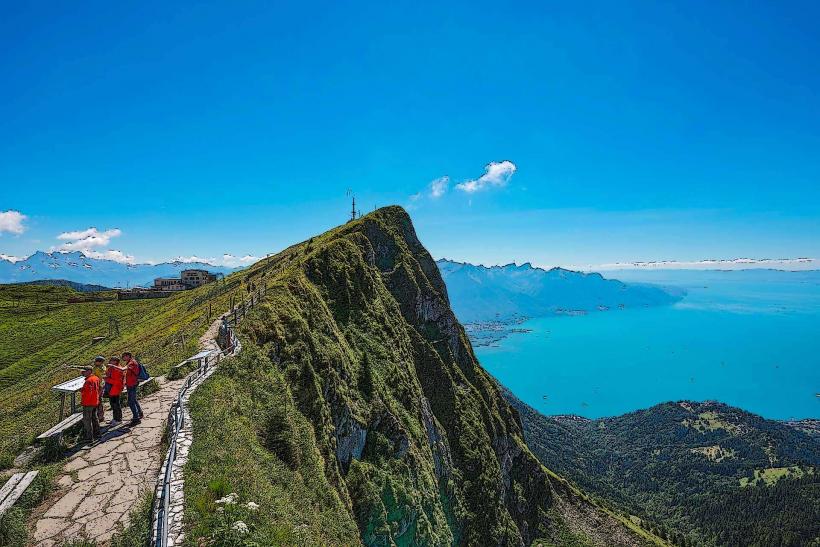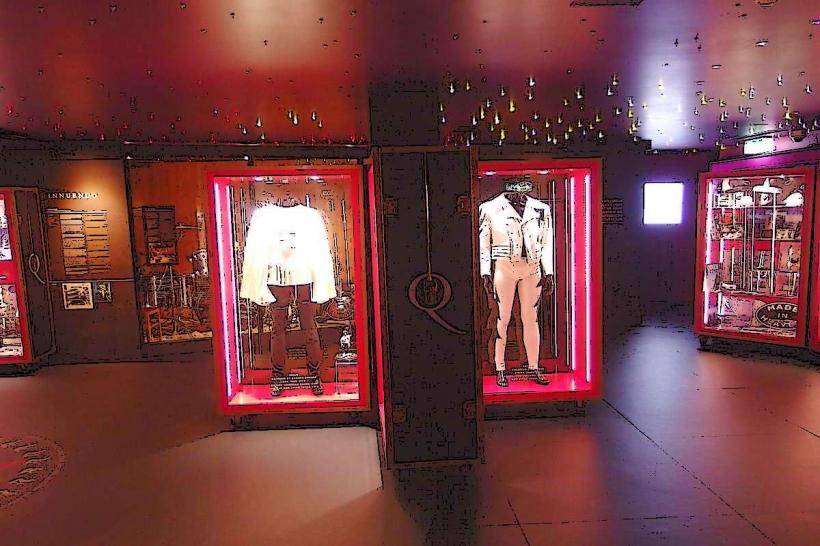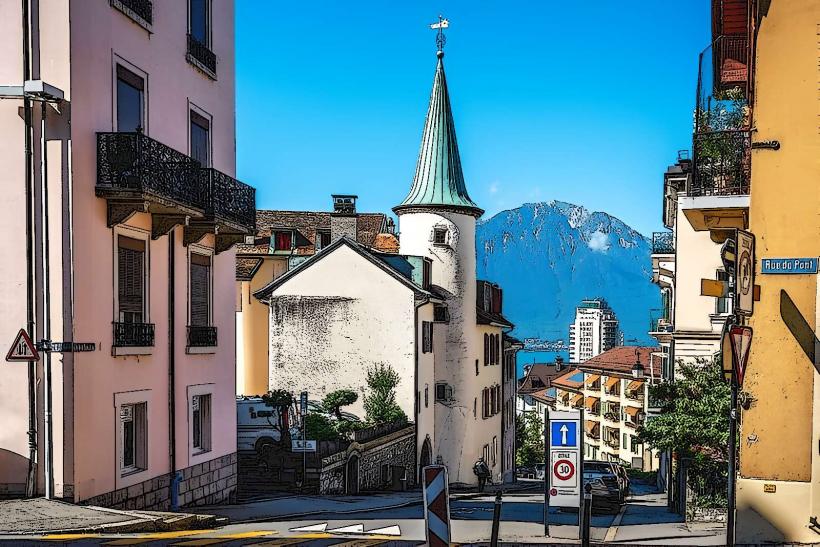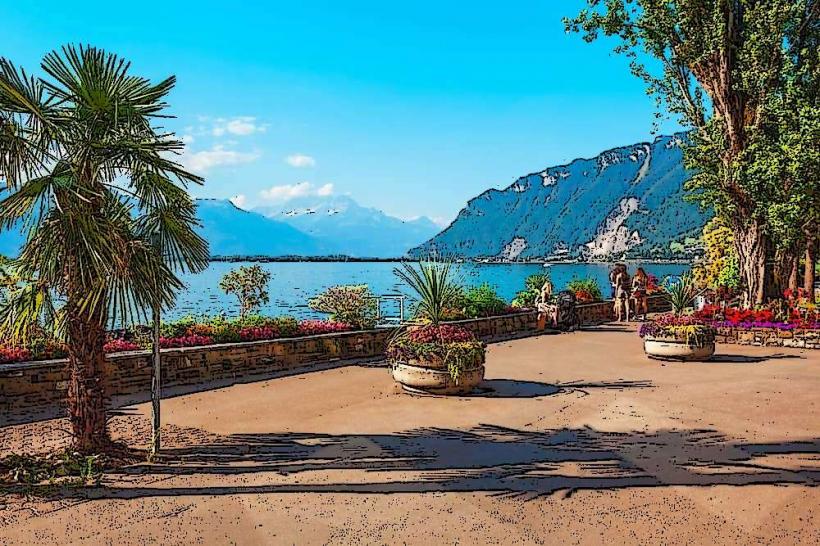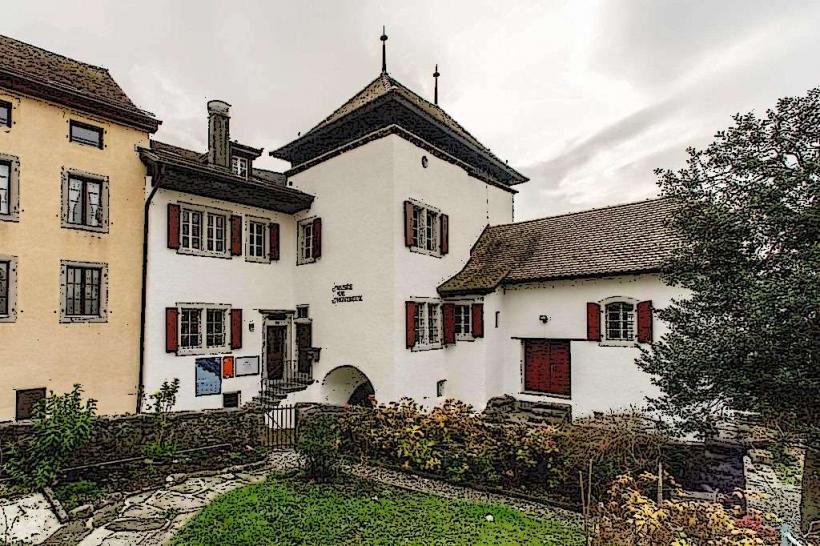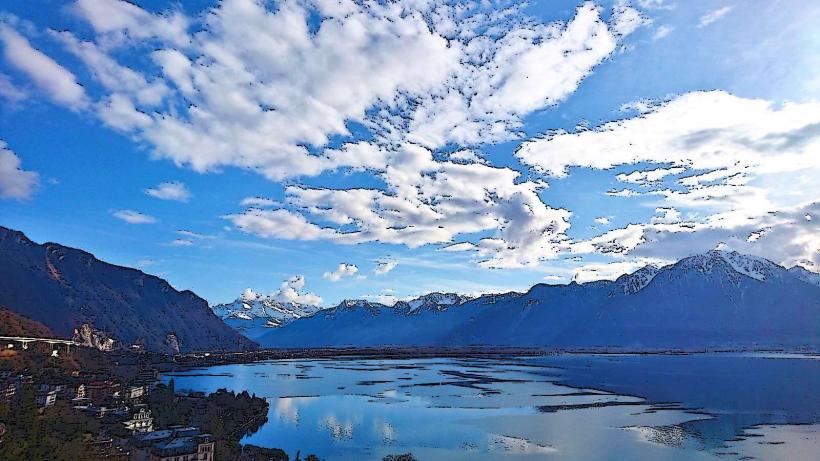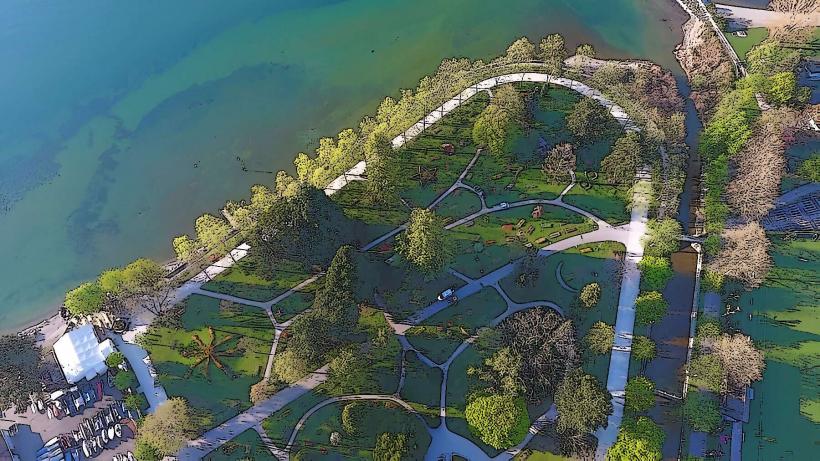Information
Landmark: CauxCity: Montreux
Country: Switzerland
Continent: Europe
Caux is a picturesque village located in the Swiss Alps, in the Canton of Vaud, above the town of Montreux on the shores of Lake Geneva. It is part of the municipality of Montreux and sits at an altitude of about 1,000 meters (3,280 feet), offering breathtaking views of the surrounding lake and mountains.
Key Highlights of Caux
1. Historical Significance
- Caux has a rich history, with its development closely tied to the rise of tourism in the region. In the 19th century, it became a popular resort for the European aristocracy and wealthy travelers who sought the natural beauty and tranquility of the Alps.
- One of the key moments in its history was the establishment of the Caux Palace Hotel in the late 19th century, which helped turn the village into a luxury destination for international visitors. The hotel still stands today, and its grand architecture is a reminder of the village's historical significance.
2. Caux Palace Hotel
- The Caux Palace Hotel, now home to the Institut Caux, has long been a major landmark in Caux. The hotel was originally built to cater to wealthy tourists, and its grand design, with its spacious terraces and panoramic views of the lake and mountains, is a reflection of the luxury that the village was known for in the 19th and early 20th centuries.
- Today, Institut Caux continues the tradition of bringing people from around the world together for conferences, training programs, and global dialogues focused on peace, reconciliation, and social justice.
3. Panoramic Views
- One of the main attractions of Caux is its stunning views of Lake Geneva and the surrounding mountains, including the Alps. Visitors can enjoy unobstructed vistas of the lake and the nearby towns of Montreux, Vevey, and Lausanne, as well as distant views of the French Alps across the lake.
- The peaceful atmosphere of Caux, with its elevated position, makes it a perfect spot for those seeking tranquility and natural beauty, offering numerous opportunities for photography and relaxation.
4. Caux and the Rochers-de-Naye Railway
- Caux is connected to Montreux via the Montreux-Caux-Rochers-de-Naye railway, a scenic cogwheel train ride that climbs the mountain slopes and offers travelers the chance to enjoy spectacular views of Lake Geneva and the surrounding landscapes.
- The journey from Montreux to Caux is particularly famous for its beautiful vistas, passing through woodlands, meadows, and mountain scenery along the way.
5. Hiking and Nature Walks
- The surrounding landscape of Caux is ideal for outdoor activities such as hiking, mountain biking, and nature walks. There are several trails that lead to the summit of nearby peaks, such as Rochers-de-Naye, where visitors can enjoy sweeping views and the experience of walking through lush alpine meadows.
- Caux itself is a perfect base for exploring the region’s natural beauty, with multiple walking paths and trails that wind through the Alps and offer access to mountain lakes, forests, and stunning views of the lake and valley below.
6. Institut Caux and Global Dialogues
- As mentioned earlier, Institut Caux is located in the former Caux Palace Hotel and is a key institution in the village. It is dedicated to promoting peacebuilding, sustainable development, and intercultural dialogue through conferences and programs that attract individuals and organizations from around the world.
- The Institut Caux hosts major international conferences, such as the Caux Forum for Human Security and the Caux Dialogue on Land and Security, where leaders and experts gather to discuss global issues and find collaborative solutions to challenges related to peace and security.
7. Caux's Spiritual and Cultural Role
- In addition to its natural and historical significance, Caux also has a cultural and spiritual dimension. The village is known for its association with the Christian pacifist movement and has hosted numerous events aimed at fostering peace, tolerance, and mutual understanding.
- Many visitors to Caux come to reflect and learn about peaceful living in this serene environment. The Institut Caux continues this legacy with workshops, seminars, and activities focused on spiritual growth and global peacebuilding.
8. Local Culture and Architecture
- Caux maintains its traditional Swiss village charm, with chalets, wooden buildings, and narrow, winding streets that reflect the architectural style typical of mountain villages. The buildings in Caux are designed to blend harmoniously with the natural environment, and the area remains relatively untouched by large-scale development.
- The village has a quiet, tranquil atmosphere, and while it is primarily a residential area and a conference destination, there are a few local shops, cafés, and restaurants where visitors can enjoy local Swiss cuisine and interact with the friendly community.
9. Access and Accessibility
- Caux is easily accessible from Montreux, which is well connected by train to other major cities in Switzerland. The Montreux-Caux-Rochers-de-Naye railway offers a direct and scenic route to the village, and visitors can also reach Caux by car or via hiking routes from nearby towns and resorts.
- The region around Caux is well-suited to visitors with a range of accessibility needs, and there are facilities for people with disabilities, though some of the mountain trails may be more challenging to navigate.
Conclusion
Caux is a hidden gem nestled in the Swiss Alps, offering visitors a peaceful retreat surrounded by stunning natural beauty. With its rich history, spectacular views, and strong cultural and spiritual significance, the village is a perfect destination for those looking to experience the serene atmosphere of the Swiss mountains. Whether you're visiting for the hiking, historical sites, or the educational programs at Institut Caux, it is a place that offers a blend of tranquility, learning, and breathtaking scenery.

